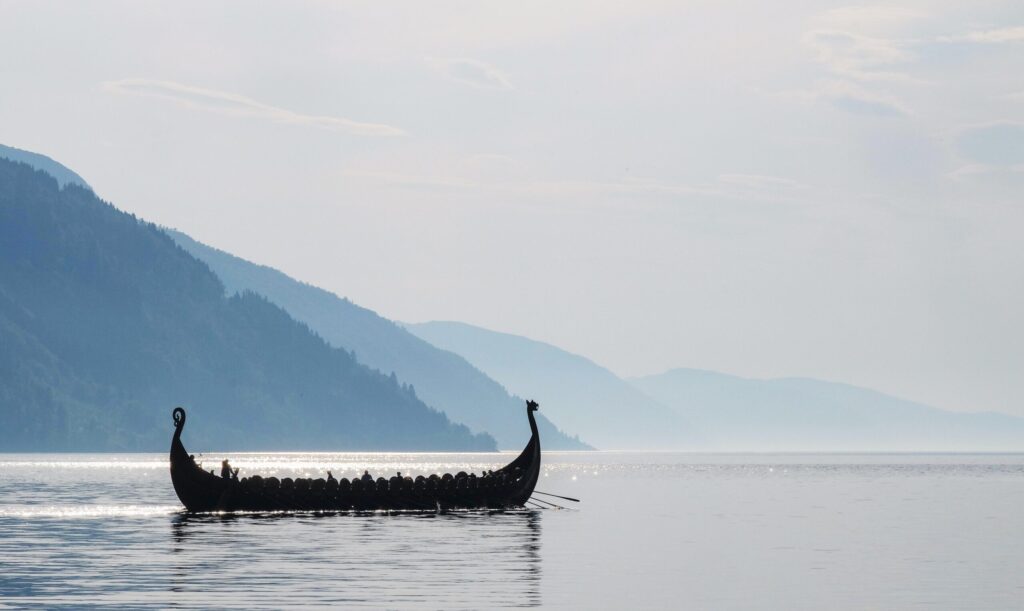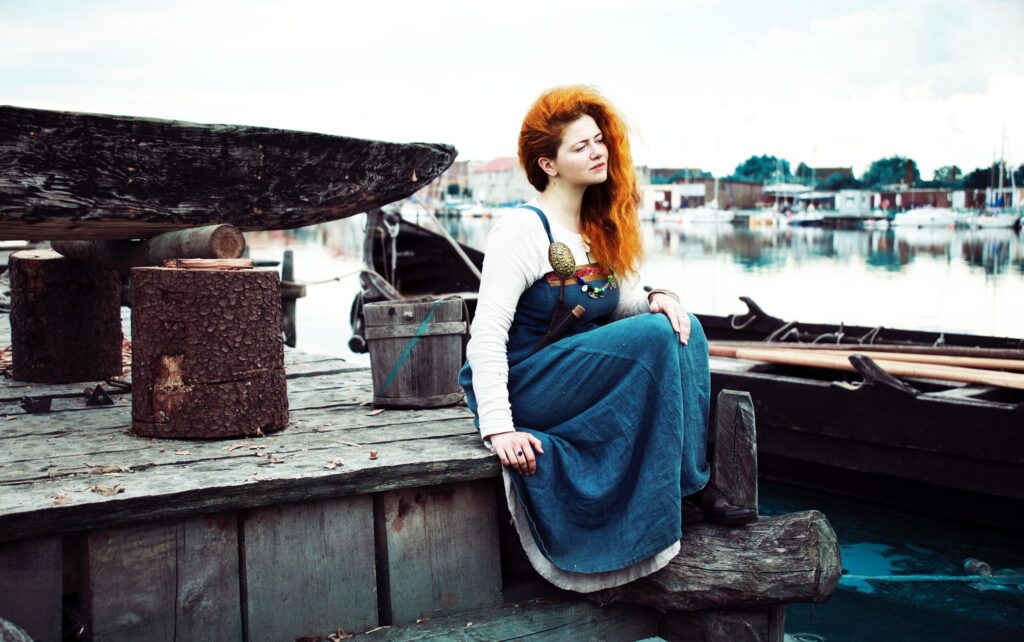 Tracing the Legacy of the Norse Warriors through Scandinavia’s Stunning Landscapes
Tracing the Legacy of the Norse Warriors through Scandinavia’s Stunning Landscapes
You may have heard of cheese trails, chocolate tours and winery maps to follow. But, did you know that there is a Viking Trail in Sweden for travelers?
The Viking Trail is a route that takes visitors on a journey through the history of the Vikings in Sweden, exploring their culture, traditions, and way of life.
This trail spans several regions of Sweden, including Uppland, Södermanland, and Östergötland, and covers a range of Viking-era sites, such as museums, burial grounds, and Viking villages.
Whether you’re interested in Viking battles, daily life, or trade and commerce, there’s something along the Viking Trail in Sweden for history buffs.
Some of the highlights of the Viking Trail in Sweden include the Viking town of Birka, which is a UNESCO World Heritage Site located on the island of Björkö in Lake Mälaren; the Viking ring fort at Trelleborg, which is one of the best-preserved Viking fortifications in the world.

The Viking museum at Foteviken, which is a living history museum that offers visitors the opportunity to experience what life was like in a Viking village.
The Viking Trail in Sweden spans several regions and covers a range of Viking-era sites, including museums, burial grounds, and Viking villages.
Various tour operators offer guided tours along the Viking Trail in Sweden, which can be a great way to get an in-depth understanding of the history and culture of the Vikings in Sweden.
Here are some of the stops on the Viking Trail:
- Birka: Located on the island of Björkö in Lake Mälaren, Birka is a UNESCO World Heritage Site and was an important Viking trading town during the 8th to 10th centuries. Visitors can explore the remains of the town and see Viking artifacts at the Birka Museum.
- Gamla Uppsala: Gamla Uppsala was a major religious and political center during the Viking era and is home to several impressive burial mounds, including the Royal Mounds, which are said to be the graves of legendary Swedish kings.
- Trelleborg: Trelleborg is a Viking ring fort and one of the best-preserved Viking fortifications in the world. Visitors can explore the reconstructed fort and learn about Viking military strategy.
- Foteviken Viking Museum: The Foteviken Viking Museum is a living history museum that offers visitors the opportunity to experience life in a Viking village. Visitors can see authentic Viking houses, watch demonstrations of Viking crafts and activities, and even try their hand at archery or axe throwing.
- Sigtuna: Sigtuna was founded in the 10th century and was an important Viking town. Visitors can explore the town’s medieval streets, see the ruins of St. Olof’s Church, and visit the Sigtuna Museum to learn more about the town’s history.
- Vikingaliv: Vikingaliv is a museum in Stockholm that uses interactive exhibits and immersive experiences to bring Viking history to life. Visitors can explore a reconstructed Viking village, participate in a Viking battle, and learn about Viking mythology and culture.
- Skara: Skara was an important Viking town and is home to several interesting historical sites, including Skara Cathedral, which dates back to the 11th century, and the Skara Brae Viking village. This reconstructed Viking village gives visitors a sense of what life was like during the Viking era.
- Jellinge: Jellinge is located in the province of Småland and is home to many Viking-era sites, including the Jellinge Stones, considered some of the most important Viking artifacts in the world. The stones feature inscriptions by King Harald Bluetooth and are often referred to as the “birth certificate” of Denmark.
- Hovgården: Hovgården is a Viking-era burial ground and settlement located on the island of Adelsö in Lake Mälaren. Visitors can see the remains of Viking houses and workshops and learn about Viking customs and traditions.
- Lofotr Viking Museum: Located in the Lofoten Islands, the Lofotr Viking Museum is a reconstructed Viking village that offers visitors a glimpse into daily life during the Viking era. Visitors can see Viking longhouses, watch demonstrations of Viking crafts, and even participate in a traditional Viking feast.
- Gotland: Gotland is an island located off the coast of Sweden and is home to several Viking-era sites, including the Viking ring fortress at Visby and the Viking grave site at Lilla Bjärs.
- Hedeby: Hedeby was an important Viking trading town located in what is now Germany. Visitors can see the remains of the town and learn about Viking trade and commerce.

Trail Timing:
The time you should allow to do the whole Viking Trail in Sweden can vary depending on your travel style and interests. If you’re the type of traveler who likes to take things slow and explore each site in depth, you may need more time than if you’re looking to get a broad overview of Viking history in Sweden.
Although, a rough estimate for the time to do the entire Viking Trail in Sweden takes 10-14 days. This timing allows enough time to visit all of the major sites along the trail and have extra time to explore the local areas around each site.
If you have less time–focus on a smaller section of the Viking Trail, such as the sites around Lake Mälaren, which includes Birka, Hovgården, and Sigtuna. Allow 3-5 days, depending on how much time you want to spend at each site.
If you have more time and want to delve deeper into Viking history, tack on other Viking sites in nearby countries, such as Denmark, Norway, or Iceland.

Here are a few resources for following the Viking Trail in Sweden:
Visit Sweden’s website has a suggested itinerary and map for the Viking Trail that covers many of the important sites in Sweden. The itinerary includes recommendations for how to get to each site and how long to spend at each location. You can find the itinerary and map on the Visit Sweden website.
The Viking Trail app is a mobile application that provides information about Viking-era sites and museums in Sweden. The Viking Trail app includes a map that shows the locations of each site, as well as information about the history of each site and how to get there. The app is available for both iOS and Android devices.

The Swedish National Heritage Board also provides information about Viking-era sites in Sweden on their website, including a map of the significant areas. The website includes detailed information about each location and practical information for visitors, such as opening hours and admission fees.
Travelers can create a route for their journey along the trail, customizing it based on interests and the time available to spend in the country.
BTW, this may just be how the Vikings did laundy. An insightful video below for a chuckle.
Did you know?
The Swedish Viking society was characterized by a complex system of social classes, with different levels of power and status based on factors such as wealth, military prowess, and family connections.
A little history:
The Viking Age in Sweden began in the late 8th century and lasted until the mid-11th century (850-1050 AD.
One of the most important Swedish Viking towns was Birka, located on an island in Lake Mälaren. Birka was an important trading center, and archaeologists have uncovered many artifacts that provide insight into Viking trade and commerce.
They were known for their seafaring skills and ability to navigate the treacherous waters of the Baltic Sea, and were skilled shipbuilders, who developed fast, maneuverable ships well-suited for raiding and trading.

They played a vital role in establishing the Rus’ state in what is now Russia. The Varangians, a Norse group, were hired as mercenaries by the ruling princes of the region and eventually established a dynasty that lasted for several centuries.
In the late 10th century, the Swedish king Olof Skötkonung converted to Christianity, marking the beginning of the Christianization of Sweden. This process continued throughout the Viking Age and into the medieval period.
Known for their military prowess, they participated in several important battles and conflicts throughout the Viking Age. One of the most famous of these battles was the Battle of Fýrisvellir in 980, which saw the forces of King Eric the Victorious defeat an invading Danish army.
The Viking era ended with the rise of the Kingdom of Sweden in the 12th century, which marked the beginning of the medieval period in Swedish history.


